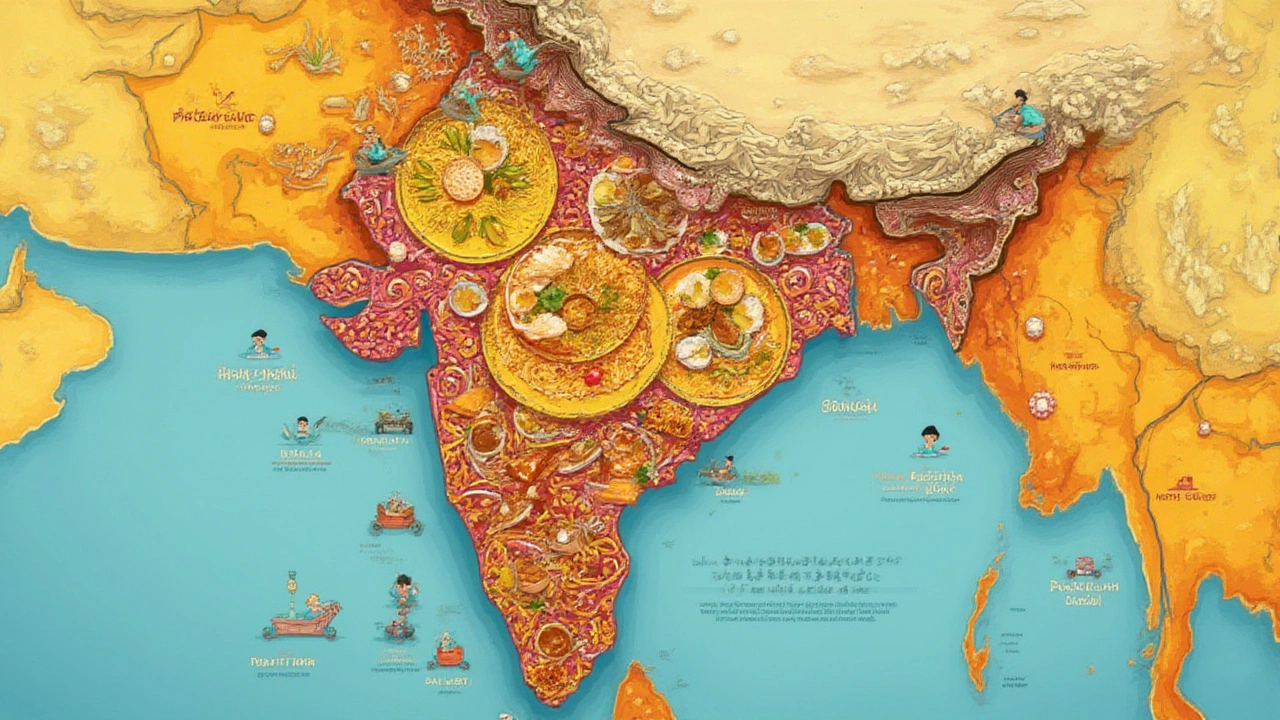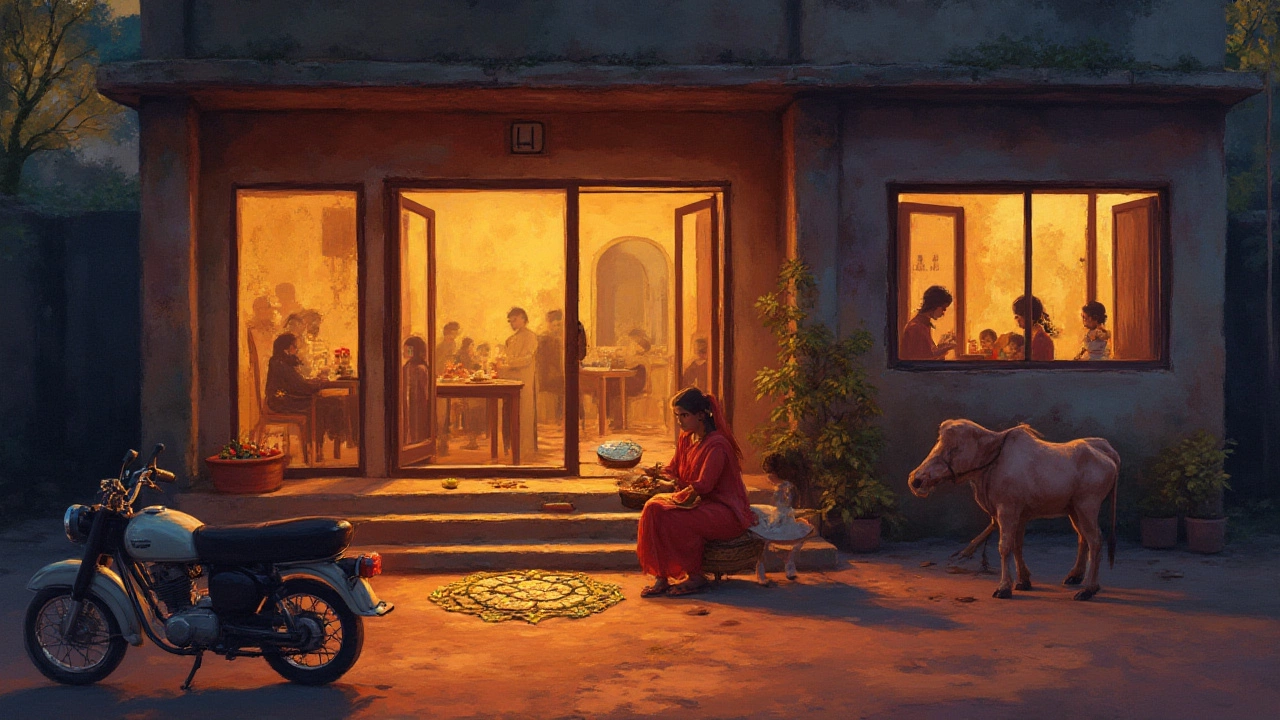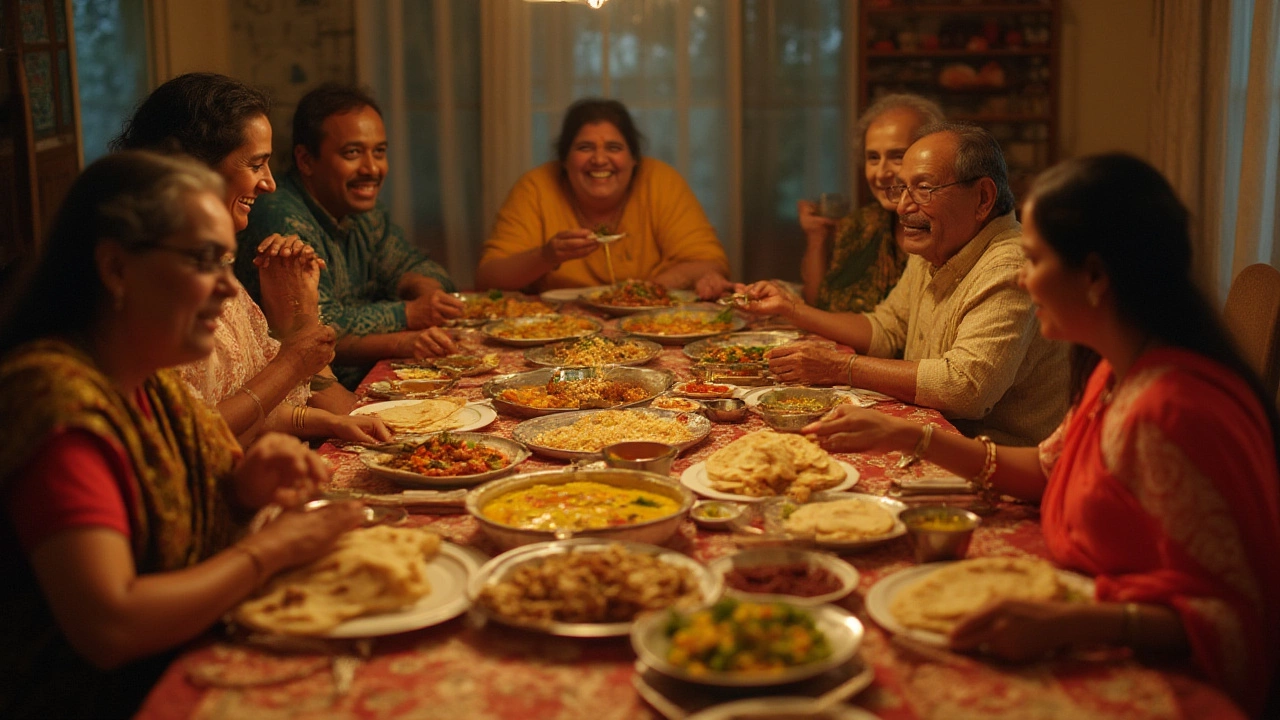Everyone’s got an idea about Indian food—maybe it’s a spicy curry, or naan straight from a tandoor. But the real question that gets people curious is: what do most Indians actually eat for dinner, say, on a Wednesday night when it’s not a festival or wedding?
Dinner on the Indian Table: Daily Staples and Family Rituals
Let’s get one big thing out of the way—Indian dinners rarely look like what you see in Bollywood films or touristy restaurants. In real life, dinner at an Indian home is about comfort and habit rather than glamour or endless variety. Most families stick to a “thali” approach, which literally just means a plate, and it’s usually loaded with a sensible combo of carbs, protein, some vegetables, and maybe a cooling touch of yogurt.
For most Indians, dinner starts with roti—yes, those round, soft whole wheat flatbreads. Rotis (or chapatis) are like the unsung heroes on every table. Paired with them you’ll find a sabzi, which means a cooked vegetable curry. Popular sabzis? Think potato with cauliflower (aloo gobi), okra (bhindi), or something seasonal like pumpkin. Alongside, dal (lentil stew) is almost a given—masoor, toor, moong—each family has a favorite. Steamed rice, sometimes swapped in for or added to rotis, is comfort food, especially in the South and East, where people love their rice.
Yogurt—called dahi—often mellows out the spices. You might also find an achaar (pickled vegetables) or papad (thin, crisp crackers) on plates, adding a salty crunch. But here’s a fun fact: about 40% of Indians are vegetarian, so the default dinner is usually meat-free in a big slice of the country. Yet, in some regions, especially coastal states like Kerala or Bengal and in the North East, fish and meat curries are just as common as dal.
Most kids in Indian homes whine about “lauki ki sabzi” (bottle gourd curry), but nearly every parent has it on repeat for its fiber and gentleness on the tummy. And as much as paneer tikka is beloved at restaurants, it’s actually homemade paneer in a simple curry or stuffed in parathas that is a weeknight favorite. Not to forget the grandmothers who—without fail—sneak ghee onto chapatis when nobody’s looking.

Regional Twists: From Roti-Rice Divide to Unexpected Favorites
If you travel across India, dinner changes as you go: in Punjab, meals are heavier, with thick dals (like black urad dal simmered for hours), buttery parathas, and sometimes, a meaty curry or a glass of lassi on the side. Down South, it’s almost always rice—served with sambar (a tangy lentil-vegetable stew), rasam (a thin tomato-tamarind soup), and a dry vegetable stir-fry. Coconut sneaks into many dishes, especially in Kerala and Tamil Nadu. In Bengal, fish curry with steamed rice is nearly sacred, thanks to the region’s rivers and water bodies. East Indians are famous for mixing mustard into their fish and veggie dishes, which gives dinner a real kick.
Mumbai and the West have a love story with pav (a fluffy bread roll), which pops up alongside misal (spicy sprouts curry) or bhaaji (veggie medley). If you’re ever in Gujarat and you wonder why everything has a touch of sweetness, it’s totally on purpose. Their dal is sweeter, and dinner servings always end with a little something sweet—sometimes even jaggery or a cube of sugar.
On weekends, it’s common for families to pull out the pressure cooker for a batch of biryani or an elaborate chicken/mutton curry, especially if there’s a get-together. But Monday to Friday? Dinner is about simplicity you can whip up in half an hour after work.

Tasty Extras, Changing Trends, and Dinner Table Secrets
Of course, India is so diverse that even daily dinner traditions are always being tweaked. These days, you’ll see more fusion happening—quinoa salads replacing rice in calorie-conscious homes, homemade tacos stuffed with leftover sabzi, and air-fried samosas as snacks. But old habits stick—nobody feels like dinner is complete without their comfort dal or a bowl of curd.
Younger folks in urban areas experiment more—ordering in pizza thinly disguised with paneer tikka toppings or a “desi Chinese” feast with fried rice and chili paneer. According to a 2023 survey by Swiggy (India’s biggest food delivery app), 7 pm to 10 pm remains the most active dinner order window, and North Indian thalis, South Indian dosas, and various biryanis top the list. But at the same time, 68% of Indian households reportedly still prefer home-cooked food for dinner, especially when it comes to feeding kids and elders.
And don’t underestimate the power of leftovers—most households save the dal or curry from lunch and give it a fresh tadka, or tempering, for dinner. Leftover chapati becomes “phodnichi poli” (stir-fried with spices) in Maharashtra or simply reheated on a tawa elsewhere. Night owls sometimes snack on a bowl of poha (flattened rice stir fry) or upma (semolina pilaf), and the very health conscious jazz up the classic salad with black chickpeas, cucumbers, or sprouted lentils.
Here’s a quick look at a typical Indian dinner, based on region:
| Region | Main Dinner Foods | Protein Source | Popular Side |
|---|---|---|---|
| North | Roti, Sabzi, Dal | Lentils, Paneer, Meat (sometimes) | Dahi, Pickle, Salad |
| South | Rice, Sambar, Rasam, Veg curries | Lentils, Beans, Fish (coastal areas) | Papad, Chutney |
| East | Rice, Fish curry, Veg curries | Fish, Lentils | Mustard oil salad, Yogurt |
| West | Roti, Dal, Bhaji, Rice | Lentils, Sprouts | Jaggery, Chutney |
If you’re wondering why street food isn’t a regular dinner item, well, it’s because most families save pani-puri and pav bhaji for weekend outings or special cravings. And even though eating out is more common these days, it’s still seen as a treat rather than a daily fix.
If you want to try a truly Indian dinner at home, start with something simple—say, a dal tadka with plain rice and cucumber raita (yogurt salad). Or, if you’re feeling adventurous, cook a dry sabzi and pair it with whole wheat chapatis. Pro tip: don’t skip the fresh coriander sprinkle on top, and if you can’t get Indian mango pickle, a wedge of lemon does the trick.
People love to argue over the “best” Indian dinner, but the truth? Dinner in India is shaped by what’s seasonal, what’s available, and—honestly—what’s easy after a long day. I remember my partner, Kieron, asking once if people really eat heavy curries every single day. The answer? Sometimes, yes, but just as often it’s a plate of dal-chawal with a glass of buttermilk and everyone calling it a night. That’s real life.
So next time someone asks you what most Indians eat for dinner, you’ll know: it’s a mix of tradition, family, and everyday pragmatism—and there’s always room for a tiny treat at the end.
